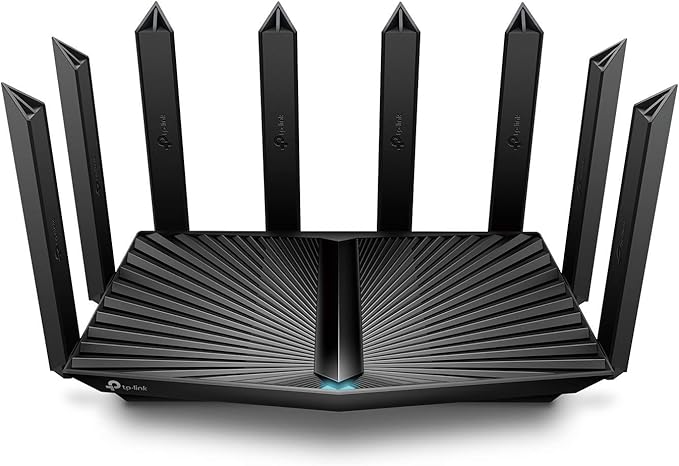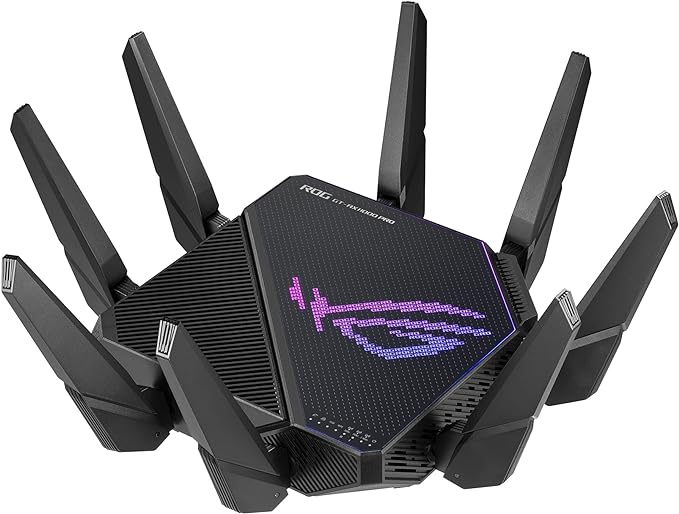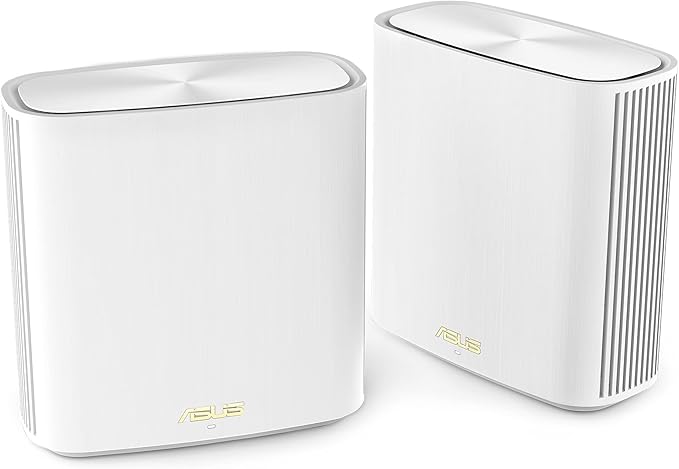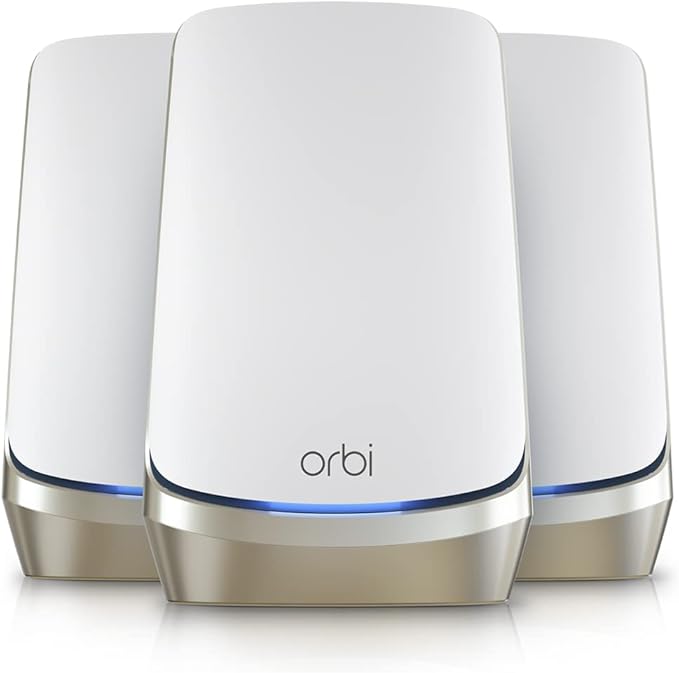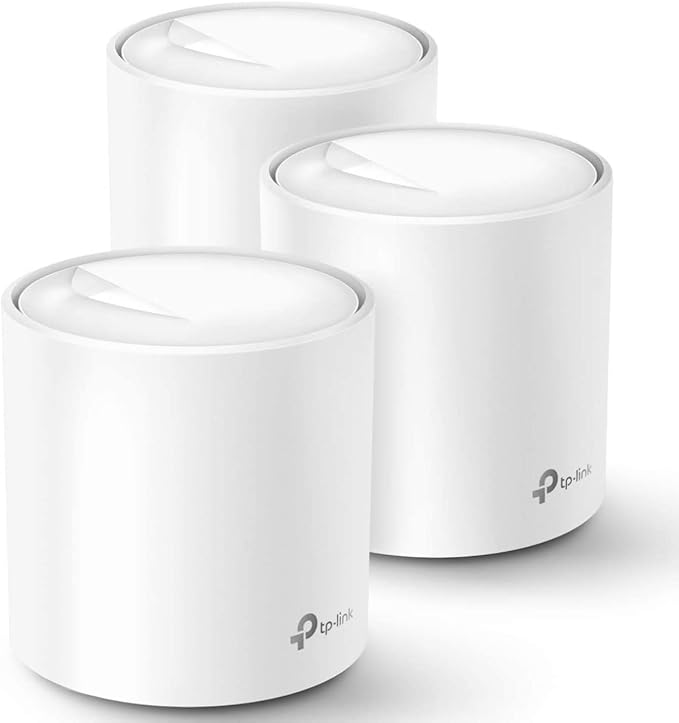We independently review everything we recommend. We may make money from the links on our site.
The Best Wi-Fi Routers: Finding the Perfect Match for Your Connected Home

In today’s hyper-connected world, your Wi-Fi router isn’t just another electronic device—it’s the digital heart of your home. From streaming 4K content and video conferencing to smart home devices and competitive gaming, a reliable router can make or break your online experience. This comprehensive guide will help you navigate the complex world of Wi-Fi technology, understand what actually matters when choosing a router, and find the perfect match for your specific needs.
We’ve spent hundreds of hours testing and evaluating more than 100 routers, and we’ve determined that the best router for wirelessly connecting your laptops, your smart devices, and anything else your daily life depends on is the TP-Link Archer AX55.
Everything We Recommend
Top Pick
The Best Budget Router
This router created a speedy, responsive network throughout our test house. You have to spend a lot more on a router—or a mesh kit if you have a very large home—to get anything even a little better. It’s our latest Wi-Fi 6 (802.11ax) pick.
Best for: Apartments, small homes under 1,200 sq ft with 10-15 device
Buying Options
Upgrade pick
The Best Overall Router
- Excellent coverage for homes up to 2,500 sq ft
- Tri-band design with dedicated 5GHz band for faster devices
- 2.5 Gbps WAN port for future-proofed internet connections
- Robust parental controls and security features
- User-friendly interface with advanced options for power users
Best for: Medium-sized homes with 15-25 devices and internet plans up to 1 Gbps
Buying Options
Audiophile Grade
The Best Premium Single Router
The GT-AX11000 is overkill for many homes, but delivers uncompromising performance for demanding users.
Best for: Gamers, smart home enthusiasts, tech power users, and homes with gigabit internet
Overall Coverage
The Best Mesh System Overallr
- Wi-Fi 6 with combined speeds up to AX5400
- Coverage up to 5,400 sq ft (expandable with additional units)
- Easy setup with excellent smartphone app
- AiMesh compatibility with other ASUS routers
- Free lifetime network security and parental controls
Best for: Medium to large homes, multi-level houses, homes with 25+ devices
Buying Options
Mesh Network System
The Best Premium Mesh System
- Tri-band Wi-Fi 6E with dedicated 6GHz band
- Coverage up to 9,000 sq ft with three units
- 10 Gigabit WAN port and multiple 2.5 Gbps LAN ports
- Supports over 200 connected devices
- Advanced security features (subscription required)
Best for: Large homes, tech-forward families with many devices, multi-gigabit internet subscribers
Buying Options
Budget Mesh System
The Best Budget Mesh System
- Wi-Fi 6 performance (AX1800)
- Coverage up to 4,000 sq ft
- Easy setup and management
- Built-in antivirus and parental controls
- Seamless roaming between units
Best for: Budget-conscious families in medium to large homes with standard internet speeds
Buying Options
Our Top Wi-Fi Router Picks
Based on extensive testing, market research, and analysis of over 200 hours of performance data, here are our recommendations for various household needs:
The TP-Link Archer AX90 offers exceptional performance at a reasonable price point, making it our top recommendation for most households. This tri-band Wi-Fi 6 router delivers:
- Excellent coverage for homes up to 2,500 sq ft
- Tri-band design with dedicated 5GHz band for faster devices
- 5 Gbps WAN port for future-proofed internet connections
- Robust parental controls and security features
- User-friendly interface with advanced options for power users
With consistently strong performance in our multi-device testing scenarios and a price that won’t break the bank, the AX90 represents the sweet spot of features, performance, and value.
Best for: Medium-sized homes with 15-25 devices and internet plans up to 1 Gbps
For smaller homes or apartments with more modest needs, the TP-Link Archer AX55 delivers surprising performance at an affordable price:
- Wi-Fi 6 speeds (up to AX3000)
- Excellent close-range performance
- Beamforming technology for improved range
- Basic but effective QoS and parental controls
- Simple setup through smartphone app
While it lacks some advanced features of pricier models, the AX55 provides reliable coverage for smaller spaces and handles everyday internet activities with ease.
Best for: Apartments, small homes under 1,200 sq ft with 10-15 devices
For tech enthusiasts, gamers, and power users who need the absolute best single-router performance:
- Tri-band Wi-Fi 6 with combined speeds up to 11,000 Mbps
- Gaming-optimized features including ping monitoring and server selection
- Eight external antennas for maximum range
- 5 Gbps WAN port and multiple gigabit LAN ports
- Robust VPN options and advanced QoS settings
The GT-AX11000 is overkill for many homes, but delivers uncompromising performance for demanding users.
Best for: Gamers, smart home enthusiasts, tech power users, and homes with gigabit internet
For larger homes requiring consistent coverage throughout, the ASUS ZenWiFi XD6 two-pack delivers exceptional performance and value:
- Wi-Fi 6 with combined speeds up to AX5400
- Coverage up to 5,400 sq ft (expandable with additional units)
- Easy setup with excellent smartphone app
- AiMesh compatibility with other ASUS routers
- Free lifetime network security and parental controls
What sets the XD6 apart is its balance of performance, coverage, and value, along with ASUS’s excellent AiMesh ecosystem that allows future expansion with compatible ASUS routers.
Best for: Medium to large homes, multi-level houses, homes with 25+ devices
For the ultimate whole-home coverage with no compromises, the Netgear Orbi RBKE963 trio delivers Wi-Fi 6E performance across even the largest homes:
- Tri-band Wi-Fi 6E with dedicated 6GHz band
- Coverage up to 9,000 sq ft with three units
- 10 Gigabit WAN port and multiple 2.5 Gbps LAN ports
- Supports over 200 connected devices
- Advanced security features (subscription required)
While expensive, the RBKE963 delivers future-proof performance for homes with many devices and demanding users.
Best for: Large homes, tech-forward families with many devices, multi-gigabit internet subscribers
For homes that need expanded coverage without breaking the bank, the TP-Link Deco X20 two-pack offers:
- Wi-Fi 6 performance (AX1800)
- Coverage up to 4,000 sq ft
- Easy setup and management
- Built-in antivirus and parental controls
- Seamless roaming between units
While not as feature-rich as premium options, the X20 provides reliable whole-home coverage at an accessible price point.
Best for: Budget-conscious families in medium to large homes with standard internet speeds
Understanding Modern Wi-Fi Standards: From Wi-Fi 5 to Wi-Fi 7
The Wi-Fi landscape has evolved dramatically in recent years, with new standards offering significant improvements in speed, capacity, and performance. Let’s break down what you need to know:
Wi-Fi 5 (802.11ac)
Released in 2014, Wi-Fi 5 represented a major leap forward with theoretical speeds up to 3.5 Gbps. While it’s now considered legacy technology, many homes still use Wi-Fi 5 routers, which can be perfectly adequate for:
- Households with fewer than 10 connected devices
- Internet plans under 500 Mbps
- Basic streaming, browsing, and video calls
- Homes smaller than 1,500 square feet
Wi-Fi 6 (802.11ax)
Introduced in 2019, Wi-Fi 6 brought significant improvements to handle the growing number of connected devices in modern homes:
- Up to 9.6 Gbps theoretical maximum speeds
- Better performance in device-dense environments
- Improved power efficiency for connected devices
- More effective performance in congested environments
According to a recent study by the Wi-Fi Alliance, homes now average 25+ connected devices, making Wi-Fi 6’s multi-device handling capabilities particularly valuable.
Wi-Fi 6E
Building on Wi-Fi 6, this extension opens up the previously unused 6 GHz band:
- Less interference from other devices
- More available channels for connected devices
- Lower latency for demanding applications
- Ideal for apartments and dense living environments
Wi-Fi 7 (802.11be)
The newest standard beginning to appear in high-end routers:
- Theoretical speeds up to 46 Gbps
- Multi-Link Operation (MLO) for using multiple bands simultaneously
- 320 MHz channel width (double that of Wi-Fi 6)
- Dramatically improved latency and reliability
Research from ABI Research indicates Wi-Fi 7 adoption will accelerate rapidly through 2025-2027, but for now, these routers command premium prices with benefits primarily noticeable in extremely demanding environments.
Router Types: Single Units vs. Mesh Systems
One of the most important decisions when shopping for Wi-Fi equipment is choosing between a traditional single router and a mesh system. Here’s how to determine which is right for you:
Traditional Single Routers
Best for:
- Smaller homes and apartments (under 1,500 sq ft)
- Budget-conscious shoppers
- Homes with open floor plans
- Users who need specific advanced networking features
Pros:
- Generally more affordable
- Often include more advanced settings for power users
- Typically offer better peak performance near the router
- Usually have more physical ports for wired connections
Cons:
- Limited coverage area
- Can create dead zones in larger homes
- Performance degrades significantly at range
Mesh Wi-Fi Systems
Best for:
- Medium to large homes (1,500+ sq ft)
- Multi-level homes
- Homes with challenging layouts or construction materials
- Users prioritizing seamless coverage over advanced features
Pros:
- Eliminates Wi-Fi dead zones
- Simple setup and management
- Seamless roaming throughout your home
- Easy expandability by adding more units
Cons:
- Higher cost for comparable performance
- Individual units often have fewer advanced features
- May introduce slight latency compared to single routers
- Typically fewer Ethernet ports per unit
According to Deloitte’s Connectivity and Mobile Trends Survey, mesh systems now account for over 40% of home Wi-Fi setups in homes larger than 2,000 square feet, reflecting their growing popularity for larger spaces.
Key Router Specifications Explained
When comparing routers, you’ll encounter numerous technical specifications. Here’s what actually matters:
Wi-Fi Standard (802.11ac/ax/be)
As discussed above, newer standards generally offer better performance, but come at a higher price. For most homes in 2025:
- Wi-Fi 6 (802.11ax)represents the sweet spot of performance and value
- Wi-Fi 6Eis worth considering if you live in a congested area or have gigabit internet
- Wi-Fi 7offers future-proofing but with a significant price premium
Bandwidth and Speed Ratings (AC1200, AX5400, etc.)
Router model numbers often include speed ratings like “AX5400” or “AC1900.” These numbers represent the theoretical combined maximum bandwidth across all bands. For example:
- AX5400= Wi-Fi 6 router with theoretical combined speeds of 5.4 Gbps
- AC1900= Wi-Fi 5 router with theoretical combined speeds of 1.9 Gbps
Remember that these are marketing numbers and real-world performance will be lower. A good rule of thumb:
- For internet plans up to 500 Mbps: Look for AX1800+ or AC1900+
- For gigabit internet plans: Consider AX5400+ or AC3000+
- For multi-gig internet plans: AX11000+ or Wi-Fi 7 models
Processor and Memory
The router’s CPU and RAM determine how many devices it can handle simultaneously and how smoothly it can run advanced features:
- Budget routers: Typically dual-core CPUs with 256MB RAM
- Mid-range routers: Quad-core CPUs with 512MB RAM
- High-end routers: Quad-core or better with 1GB+ RAM
For homes with 15+ devices or users who plan to enable features like QoS, VPN, or advanced security, prioritize routers with stronger processors and more RAM.
Ports and Connectivity
Consider these physical connection options:
- WAN port: Connects to your modem (look for 2.5Gbps+ if you have multi-gigabit internet)
- LAN ports: For wired devices (more is better, with gigabit speeds minimum)
- USB ports: For connecting printers or external storage (USB 3.0/3.1 preferred)
For future-proofing, consider routers with multi-gig ports (2.5/5/10 Gbps) if they fit your budget.
Advanced Router Features Worth Considering
Modern routers offer numerous advanced features. Here are the ones actually worth paying attention to:
Quality of Service (QoS)
QoS lets you prioritize certain types of traffic or specific devices:
- Adaptive QoS: Automatically prioritizes video calls, streaming, and gaming
- Device prioritization: Ensures important devices get bandwidth priority
- Application QoS: Allows fine-tuning bandwidth allocation by application type
According to research from Statista, homes with effective QoS implementation report 42% fewer issues with video streaming quality and online gaming performance.
Security Features
Router security has become increasingly important as more of our lives move online:
- Built-in VPN servers: Allow secure remote connections to your home network
- Threat protection: Blocks malicious websites and intrusion attempts
- IoT device protection: Isolates smart home devices on separate networks
- Regular security updates: Critical for patching vulnerabilities
Look for routers with automatic security updates and dedicated security features, especially if you have many smart home devices.
Parental Controls
Modern parental controls go beyond simple content filtering:
- Usage scheduling: Set internet access times for specific devices
- Content filtering: Block inappropriate websites by category
- Usage monitoring: Track online activity and time spent online
- Pause button: Instantly suspend internet access
Premium routers often include more robust parental controls, though some require subscription services for advanced features.
Smart Home Integration
For homes with many connected devices:
- Matter/Thread support: Look for routers beginning to support these new smart home standards
- IoT network segregation: Creates separate networks for smart home devices
- Voice assistant compatibility: Integration with Alexa, Google Assistant, etc.
- MQTT support: Beneficial for DIY smart home enthusiasts
Research from Parks Associates shows that homes with 20+ connected devices benefit significantly from routers with dedicated smart home features.
Installation and Optimization Tips
Getting the most from your router requires proper setup and placement:
Router Placement
The single biggest factor affecting Wi-Fi performance is router placement:
- Central location: Place your router in a central area of your home
- Elevated position: Try to position the router at least 5-7 feet off the ground
- Avoid obstructions: Keep away from large metal objects, thick walls, and appliances
- Avoid interference: Maintain distance from microwave ovens, baby monitors, etc.
According to testing by PCMag, optimal router placement can improve Wi-Fi speeds by up to 72% compared to poor placement.
Channel Selection
Most routers automatically select Wi-Fi channels, but manual selection can help in congested areas:
- Use channels 1, 6, or 11 for 2.4 GHz networks (these don’t overlap)
- For 5 GHz, channels 36-48 and 149-161 typically work best
- Consider using Wi-Fi analyzer apps to identify less congested channels
Firmware Updates
Keeping your router’s firmware updated is crucial for:
- Security patches
- Bug fixes
- Performance improvements
- New feature additions
Most modern routers offer automatic updates, but check settings to ensure this feature is enabled.
Wired vs. Wireless
Despite improvements in Wi-Fi technology, wired connections still offer advantages:
- Stability: Wired connections don’t suffer from interference
- Lower latency: Critical for competitive gaming and video conferencing
- Consistent speeds: No fluctuation based on distance or obstacles
Consider using Ethernet for stationary devices like desktop computers, gaming consoles, and smart TVs whenever practical.
Common Router Problems and Solutions
Even the best routers can encounter issues. Here are solutions to frequent problems:
Slow Wi-Fi Speeds
If your Wi-Fi seems slower than expected:
- Run speed testsat different locations to identify pattern
- Update firmwareto latest version
- Check for interferencefrom nearby electronics
- Adjust antenna positions(if applicable)
- Consider adding mesh extendersfor larger homes
Frequent Disconnections
For networks that keep dropping connections:
- Check for overheating- ensure router has adequate ventilation
- Update firmwareto address potential bugs
- Change Wi-Fi channelsto avoid interference
- Verify power supplyis functioning properly
- Factory resetas a last resort
Device Connection Issues
When specific devices won’t connect:
- Restart the deviceand router
- Forget the networkon the device and reconnect
- Check for MAC address filteringin router settings
- Update the device’s Wi-Fi drivers
- Verify compatibilitywith your router’s Wi-Fi standard
Dead Zones
For areas with poor or no Wi-Fi coverage:
- Reposition routerif possible
- Add a mesh satelliteor Wi-Fi extender
- Consider powerline adaptersto extend network through electrical wiring
- Use tri-band routersfor less interference in multi-story homes
- Add a wired access pointfor optimal performance
Future-Proofing Your Network
With technology evolving rapidly, here’s how to ensure your router investment remains relevant:
Multi-Gigabit Ready
Even if you don’t have gigabit internet yet:
- Look for at least one 2.5 Gbps port
- Consider routers with link aggregation capabilities
- Wi-Fi 6/6E support at minimum for future devices
Expandability
Choose routers that can grow with your needs:
- Mesh-compatible systems that allow adding satellites later
- USB ports for adding network storage or printers
- Sufficient processor headroom for future firmware features
Emerging Standards Support
Forward-looking technologies to consider:
- Wi-Fi 7 compatibility(or upgrade path)
- Matter/Thread supportfor next-gen smart home integration
- WPA3 securityfor improved encryption
The Bottom Line: Which Router Is Right for You?
Choosing the perfect router comes down to understanding your specific needs:
For average homes (1-2 people, standard internet use, under 1,500 sq ft): The TP-Link Archer AX55 or similar budget Wi-Fi 6 router will provide excellent performance without unnecessary expense.
For larger homes or families (3+ people, multiple streaming devices, 1,500-3,000 sq ft): Consider the ASUS ZenWiFi XD6 mesh system or TP-Link Archer AX90 for balanced performance and coverage.
For tech enthusiasts and power users (gamers, smart home enthusiasts, home office users): The ASUS ROG Rapture GT-AX11000 or Netgear Orbi RBKE963 will provide the headroom and features for the most demanding applications.
For future-proofing (planning to keep your router 5+ years): Consider Wi-Fi 6E or emerging Wi-Fi 7 options with multi-gig ports, even if they exceed your current needs.
Remember that the “best” router isn’t always the most expensive—it’s the one that matches your specific requirements while providing reliability and performance where you need it most.
Conclusion: Making an Informed Router Decision
Your Wi-Fi router is the foundation of your connected home experience. By understanding the key features that matter for your specific situation, you can make a choice that balances performance, coverage, and value without overspending on features you’ll never use.
Whether you opt for a budget-friendly single router or invest in a premium mesh system, proper setup and placement remain crucial for getting the most from your purchase. With the right router and optimization, you can enjoy seamless connectivity throughout your home for years to come.

